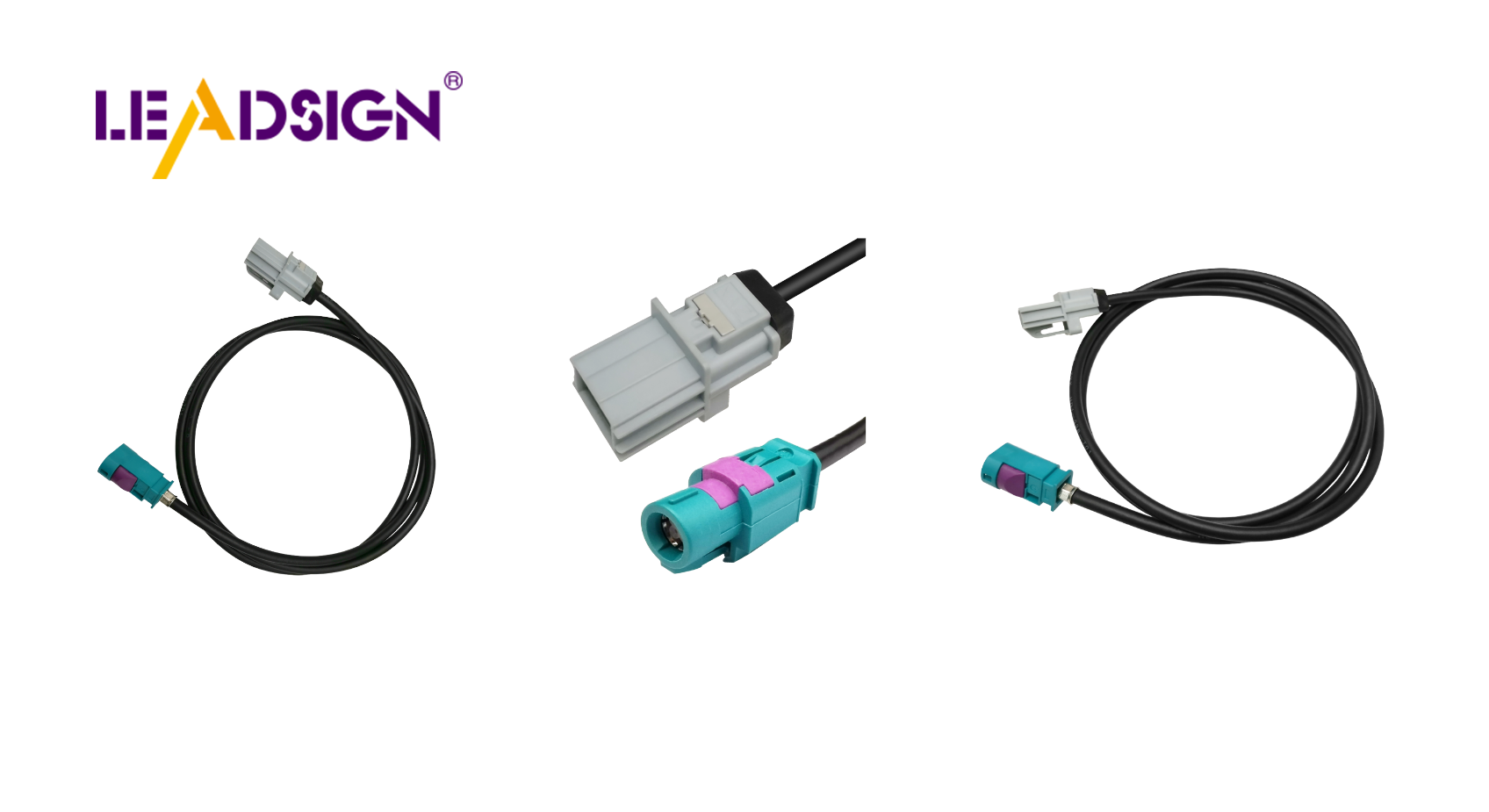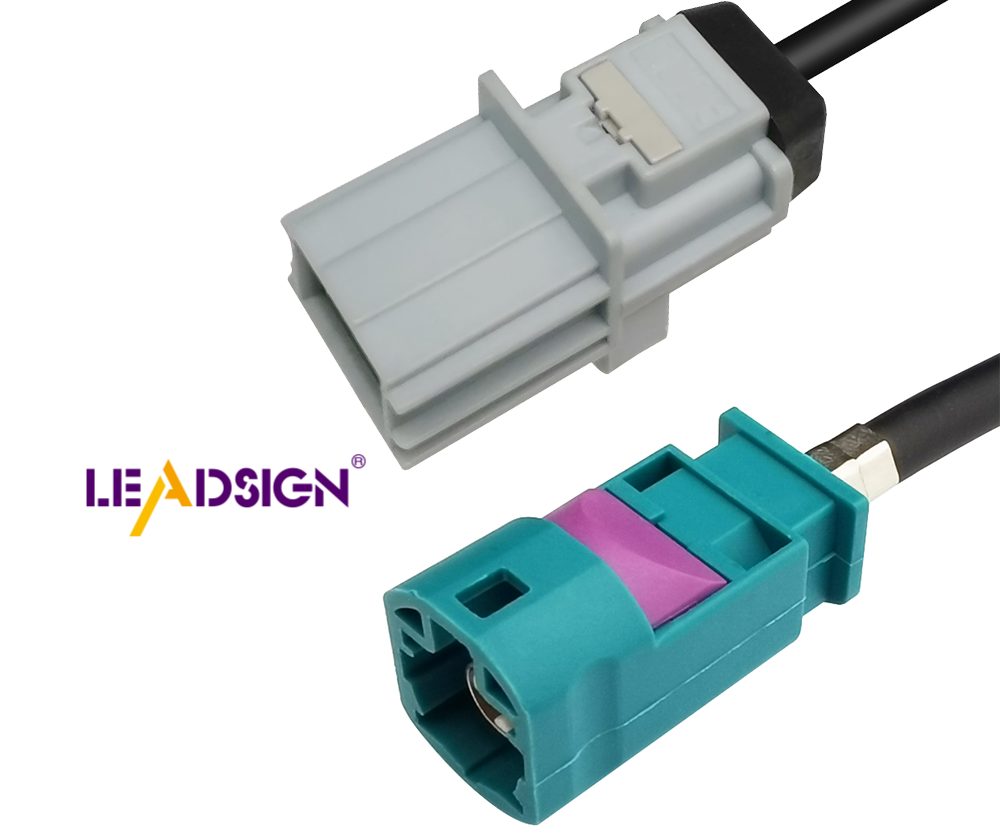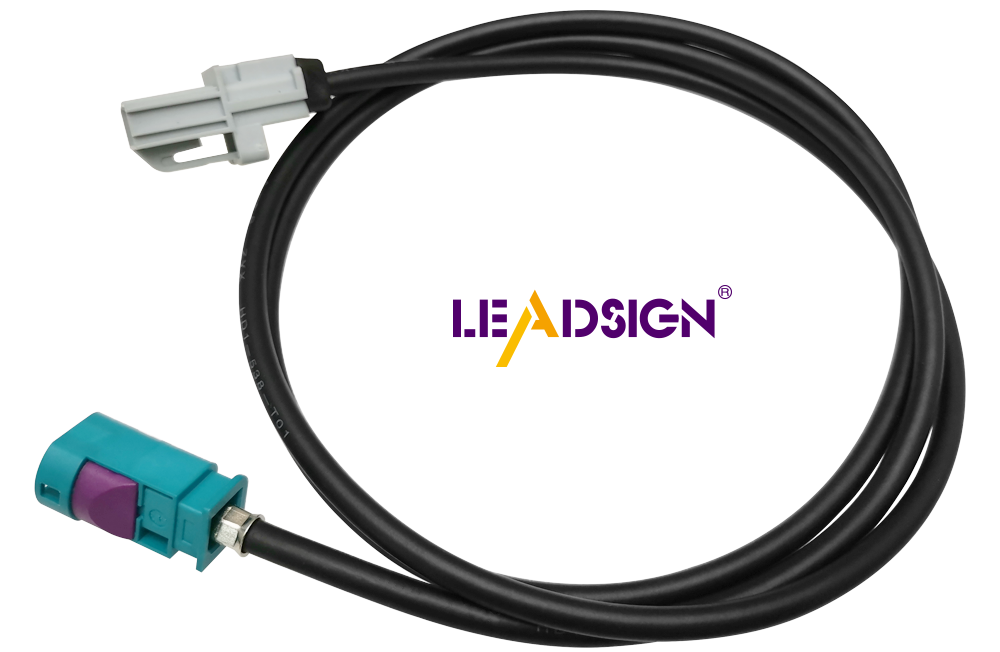Automotive Plugs and Connectors: A Comprehensive Guide

Car plugs and vehicle connectors are key parts of your car's wiring. They ensure connections work well, helping your car's electronics last longer. Knowing about these parts helps you fix your car better. Good connectors handle tough conditions, keeping things running smoothly. Picking the right vehicle connectors improves how your car works and keeps it safe. This knowledge helps you choose wisely, so your car runs well.
Key Takeaways
Understanding different types of vehicle connectors, such as blade, bullet, and pin connectors, is essential for maintaining your car's electrical system.
Choosing the right connector based on power levels and environmental conditions can prevent overheating and ensure long-lasting performance.
Regularly inspect and maintain your connectors to catch potential issues early and extend their lifespan.
Use the right tools for installation, including wire strippers and crimping tools, to ensure secure and reliable connections.
Familiarize yourself with popular brands like LEADSIGN and FAKRA to make informed choices when selecting connectors for your vehicle.
Consider the specific needs of your car's systems, such as high-speed data transfer for entertainment systems or robust connectors for engine components.
Types of Vehicle Connectors

Knowing about different vehicle connectors helps keep your car's electrical system working. Each type has its own job and benefits.
Blade Connectors
What They Are and How They're Used
Blade connectors, also called spade connectors, are flat metal pieces that fit into slots. They are common in cars because they are simple and work well. They join wires to things like speakers and lights. Their design makes it easy to connect and disconnect, which is good if you change parts often.
Good Points and Limits
Blade connectors have many good points. They make strong connections and are easy to use, so they are popular in cars. But they might not be good for high power uses. Their flat shape can limit how much power they carry safely.
Bullet Connectors
What They Are and How They're Used
Bullet connectors are round and fit tightly into a matching socket. You usually see them in car wiring where space is tight. They are used in lights and other places with little room.
Good Points and Limits
Bullet connectors give a small but strong connection. They are easy to put in or take out, making them handy for fixing things. But they might not stay connected well if there is a lot of shaking.
Pin Connectors
What They Are and How They're Used
Pin connectors can be used in many car jobs. They work well for high power needs like headlights or starter motors. These connectors help send data signals and carry strong currents.
Good Points and Limits
Pin connectors make strong connections that handle big electric loads well. They last long, so they're great for important car systems. But putting them in can be tricky; you need to line them up right and fasten securely.
Specialty Connectors
Specialty connectors have special jobs in your car's wiring. They are made for certain uses, helping car parts talk well.
Description and Common Uses
Specialty connectors come in different shapes for specific tasks. You might see them in high-tech things like GPS, sensors, or special lights. They are built to work well where regular connectors can't.
Advantages and Limitations
Specialty connectors have many good points. They make sure complex systems work right. Their design fits perfectly, so mistakes are less likely. But they can cost more than regular ones. Also, finding new ones if broken can be hard.
High-Speed Data (HSD) Connectors
High-Speed Data (HSD) connectors are important in today's cars because of the need for fast data sharing.
Description and Common Uses
HSD connectors move data quickly. You find them in music systems, cameras, and other tech inside cars. They help data move smoothly for things like maps and videos.
Advantages and Limitations
HSD connectors have several good features:
High-Speed Data Transfer: They send data fast, which is key for tech.
Durability: Made to last in tough car conditions.
Versatility: Good for many uses like maps or cameras.
But HSD connectors can be harder to put in than simple ones. Their advanced design needs careful handling to keep signals clear.
Uses and Details
Knowing where car connectors are used helps your car work well. Let's look at common uses and important details for picking the right connectors.
Common Uses in Cars
Connectors are key in many car parts. Here are some usual uses:
Engine Parts
In engines, connectors help parts talk to each other. They link sensors and control units, making engines run smoothly. Good connectors stop problems like engine misfires or bad fuel use.
Light Systems
Connectors join power to your car's lights. They make sure headlights, taillights, and inside lights work right for safety. Picking good ones stops flickering or dim lights.
Fun Systems
New cars have cool systems needing fast data connectors. These help with GPS, music, and videos by moving data quickly. They make devices talk well, making driving fun.
Important Details to Know
When choosing connectors, think about these details for best performance and safety.
Power Levels
Each connector shows how much power it can take. Picking the right one stops overheating and keeps things safe. Match them with your car's needs.
Toughness Against Weather
Connectors should handle weather changes like heat or rain. Find ones with strong seals to last long in tough spots.
Connector Build
The stuff in connectors affects how they work over time. Good materials give better signals and last longer. For fast data ones, strong covers stop signal problems from outside noise.
By knowing these uses and details, you pick the best car connectors. This helps keep your car's electric parts safe and working well.
Picking the Right Connector
Choosing a connector for your car means knowing what you need. Look at all the choices to make sure your car's electric parts work well.
Knowing What You Need
Before picking a connector, think about what your car needs. This means knowing how much electricity and what kind of weather it will face.
Checking Electrical Needs
First, check how much power your connectors need to handle. Different connectors can take different amounts of power. Make sure they can safely manage your car's electric parts. This stops them from getting too hot or breaking.
Thinking About Weather Conditions
Next, think about where the connectors will be used. Consider things like heat, wetness, and chemicals. Pick ones with good protection against dust and water. This helps them last long even in tough places.
Looking at Connector Choices
Once you know what you need, look at different connector options. Compare types and see which brands and models fit best for your car.
Comparing Types
When comparing connectors, see how many connections they have. More connections mean more ways to connect power and signals. They keep signals strong and give backup options too. Also, check if they last long in tough conditions like heat or shaking without breaking.
Checking Brands and Models
Finally, look at different brands and models available. Some brands make special connectors for certain uses; others are more general. Find brands known for being good and reliable. Compare models by their features, if they fit with your car’s systems, and user reviews to decide better.
By thinking about what you need and checking options carefully, you can pick the right connectors for your car. This makes sure your car's electric parts work safely.
Installation and Maintenance Tips

Putting in and taking care of car connectors helps your car's electric parts work well. Follow these tips to make your car's wiring last longer.
How to Install Right
Putting connectors in the right way is important. It keeps electric connections safe and working well. Here's how you do it:
Tools You Need
To put in connectors, get these tools:
Wire Strippers: To take off wire covers.
Crimping Tool: To attach connectors to wires.
Screwdriver: To tighten connectors.
Multimeter: To check electric links.
Heat Shrink Tubing: To cover connections.
Having these tools ready makes installing easy.
Steps to Put In Connectors
Follow these steps for good installation:
Get Wires Ready: Use wire strippers to take off half an inch of cover from wire ends.
Pick the Right Connector: Choose one that fits the wire size and job.
Attach Connector: Put the bare wire into connector, use crimping tool to hold it tight.
Check Connection: Use multimeter to see if connection is strong.
Cover Connection: Slide heat shrink tubing over it, heat it up to seal.
Doing this makes a safe, strong connection.
Best Ways to Maintain
Checking connectors often keeps your car's electric system good. Here are some tips:
Regular Checks
Look at connectors often to find problems early:
Look Over Them: Check for wear or damage.
Test Tightness: Make sure they are tight, not loose.
Check Workability: Use multimeter for checking electric flow.
Regular checks stop sudden problems.
Cleaning and Care Tips
Clean and care for them right for long life:
Clean Contacts Well: Use cleaner spray on dirty parts.
Keep Dry: Use grease that stops water getting in.
Store Safely: Keep extra ones dry and clean.
Taking care of them helps them work better and last longer.
Connectors are key in car wiring, helping gadgets talk, keeping systems strong, making fixes easy, and keeping cars safe.
By following these install and care tips, your car's connectors will work well, helping keep your car safe and efficient.
Comparing Popular Brands and Models
Brand Overview
LEADSIGN Features and Benefits
In car connectors, LEADSIGN is special. It has cool features. These connectors move data fast, which is great for new cars with screens and music systems. They are tough and last long in hard conditions. You can use them for GPS, cameras, and screens. The signals they send are clear, perfect for videos and sounds. Plus, they don't cost too much but work well. This makes them good for both new car parts and replacements. Their design fits easily into many car systems.
FAKRA Features and Benefits
FAKRA connectors are also popular in cars, especially for sending high-frequency signals like GPS. They keep strong connections even when things get rough. These connectors handle high-frequency signals well, so they're great for precise data needs. You'll like FAKRA connectors because they are strong and fit many car systems easily. Their standard shape makes putting them in simple, helping your car's electric system work better.
Model Comparison
HSD Connector vs. FAKRA Connector
When you look at the HSD Connector and the FAKRA Connector, you'll see they are different in what they do best. The HSD Connector sends data quickly, perfect for car screens and music players. It's strong and works in many places in a car, keeping signals clear. But the FAKRA Connector is made for high-frequency jobs like GPS antennas. It keeps connections strong even with lots of signal movement. Both have their own good points; choose based on what your car needs most.
Electric Vehicle Connector vs. High Voltage Interlocking Connector
For electric cars, picking between an Electric Vehicle Connector or a High Voltage Interlocking Connector means knowing their jobs well. Electric Vehicle Connectors help charge electric cars by linking the charging port to power sources safely and quickly—important for how well the car runs over time. High Voltage Interlocking Connectors manage big voltage safely inside electric vehicles; they're key to safety designs ensuring everything runs smoothly without danger.
Knowing about car plugs and connectors is important. It helps keep your car's electric parts working well. Picking the right one makes your car safe and work its best. For example, LEADSIGN Mini FAKRA sends data fast, great for music systems. The Molex MX150 is strong and easy to put in, good for many uses. This knowledge helps you choose better, making your car last longer and run smoothly. Use this info to get better at fixing cars and enjoy driving more.
See Also
Exploring Ford Fakra Connectors: A Complete Overview
A Deep Dive Into Fakra Plugs: Essential Insights
Enhancing Vehicle Data Flow: Key Connectors and Cables

